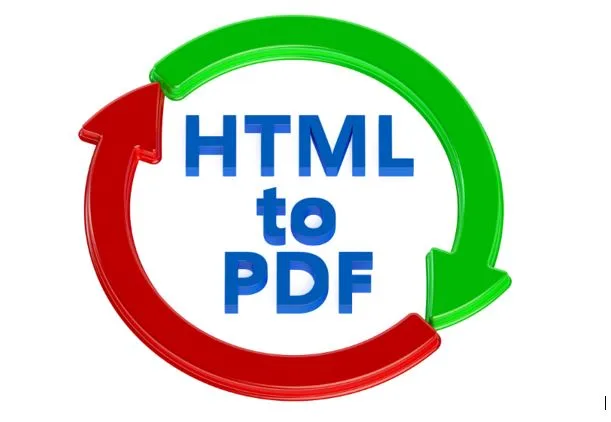The Developer’s Guide to Dynamic PDFs: Why HTML-to-PDF APIs Are Replacing Templates
Generating PDFs used to be a tedious, error-prone part of development workflows. Teams relied on legacy tools, clunky templates, or fragile scripts to turn dynamic data into printable documents. But in today’s API-driven world, document generation is shifting toward a better standard. Developers now demand automation, accuracy, and styling that reflects their front-end code. That’s why HTML-to-PDF APIs are quickly becoming the preferred method for creating consistent, high-quality PDFs across applications.
PDFs Are Still Business Critical
Despite the rise of real-time digital interfaces, PDFs remain a non-negotiable requirement for many industries. From legal documents and invoices to compliance forms, payroll summaries, and signed contracts, the need for print-ready, portable files hasn’t gone away. What has changed is the way businesses expect to create them.
Today’s platforms require documents that can be generated in real time, filled interactively, embedded into workflows, and delivered to users instantly. Waiting on manual template updates or desktop software is no longer viable for SaaS companies, fintech platforms, or e-commerce ecosystems that operate at scale.
HTML as a Foundation for Modern PDFs
Modern developers already use HTML and CSS to design beautiful, functional user interfaces. So it makes sense to leverage that same skill set for creating printable documents. With HTML-to-PDF conversion, developers gain full control over layout, style, and responsiveness. Rather than forcing data into restrictive templates, HTML allows teams to design documents just like they design web pages.
This is particularly valuable for dynamic content. Whether you’re building itemized invoices, onboarding forms, or complex reports with charts and tables, HTML lets you structure and style content to match your application’s branding.
Headless Browsers and Precision Rendering
What makes an HTML-to-PDF approach truly powerful is how it’s rendered. Instead of relying on basic HTML parsers or PDF libraries with limited styling support, advanced APIs use headless browsers to convert documents. This means that HTML and CSS are rendered the same way as in modern browsers like Chrome or Firefox.
That level of fidelity is essential when accuracy matters. Fonts, margins, tables, responsive layouts, and even advanced CSS features like flexbox or grid are handled exactly as intended. The result is a PDF that looks identical to your design mockup or front-end UI.
One platform that stands out in this area is PDFGate. It offers a developer-focused html to pdf api built around headless browser rendering. This ensures pixel-perfect output from any HTML document, complete with support for CSS, JavaScript, embedded fonts, and more. PDFGate is designed to give modern dev teams the flexibility they need to create production-ready documents without compromise.
Automating Complex Workflows
PDF generation often sits at the end of a larger workflow: submitting a form, completing a purchase, generating a report, or signing a contract. In traditional systems, that process might involve downloading data, formatting it manually, and exporting it with a template tool. This introduces delays, errors, and maintenance overhead.
With an html to pdf api, the entire process becomes automated. Developers can trigger document creation from code, populate it with real-time data, and send it to users instantly. This approach works across many industries, from generating receipts in e-commerce platforms to auto-generating compliance reports in SaaS tools.
PDFGate is designed with this kind of automation in mind. The API accepts raw HTML and styling, processes it server-side using a headless browser, and returns a fully rendered PDF file. It also supports features like custom page sizes, headers and footers, fillable form fields, and digital signature placeholders. These capabilities allow businesses to handle even the most complex PDF needs through a single integration point.
Dynamic Forms and Interactivity
One of the major limitations of traditional PDF generation tools is the lack of interactivity. In many industries, businesses rely on forms that users can fill out, save, and return. Whether it’s employee onboarding, customer intake, or legal disclosures, interactive PDFs are a must.
PDFGate enables developers to convert HTML forms directly into fillable PDFs. This means you can use standard form tags, style them as needed, and retain interactivity in the final document. No additional plugins, desktop tools, or PDF design software are required. The process is seamless and efficient, empowering teams to build better user experiences.
Why Developers Are Moving Away from Templates
Templates, once the go-to method for PDF generation, are quickly becoming obsolete in agile environments. They tend to be inflexible, hard to customize, and poorly suited for dynamic content. Maintaining a set of templates for different use cases, languages, or user types can become unmanageable at scale.
By contrast, using HTML and CSS allows for version control, theming, localization, and code reuse. Developers can apply the same programming principles they use in front-end development to their documents. This improves maintainability and reduces the risk of formatting bugs.
PDFGate supports this approach fully. It treats documents like code, giving teams the ability to generate highly customized PDFs that evolve with their product. Whether you’re iterating on a new invoice layout or localizing your forms for different regions, the flexibility is built in.
Scalability Without the Headaches
Manual PDF generation doesn’t scale. As your customer base grows, so does the volume of documents you need to produce. Running this process with outdated tools introduces risk and technical debt. HTML-to-PDF APIs offer a way out of that cycle.
PDFGate’s infrastructure is built for scale. Whether you’re creating dozens or thousands of documents per hour, the API responds with consistent output. It handles load intelligently and allows you to integrate PDF generation into cron jobs, webhooks, and backend services with minimal effort.
Developer Experience Matters
One of the key reasons platforms like PDFGate stand out is their developer-first approach. The API is clearly documented, easy to test, and integrates smoothly with any modern tech stack. There’s no need to learn a proprietary language or install large SDKs. If you can build HTML, you can generate PDFs.
Support for custom headers, secure delivery, audit-friendly metadata, and field-level control make PDFGate a complete solution for businesses with serious documentation needs. And because it’s an API-first product, it fits neatly into CI/CD pipelines and agile workflows without disrupting your existing architecture.
Conclusion: From Static to Smart, the Future of PDFs Is Here
Generating documents shouldn’t be the bottleneck in your development process. With modern html to pdf api tools like PDFGate, you can streamline workflows, eliminate formatting headaches, and deliver dynamic, brand-consistent documents every time.
Whether you’re working in finance, e-commerce, healthcare, or SaaS, the need for reliable, scalable PDF automation is growing. PDFGate gives your team the tools to build smarter, move faster, and serve users with polished, professional documents that reflect the same quality as your core product.
By replacing legacy templates with flexible HTML-based generation, developers take back control of one of the most overlooked parts of the digital experience. PDFGate is proof that PDFs don’t have to be painful. They can be powerful, precise, and production-ready.






